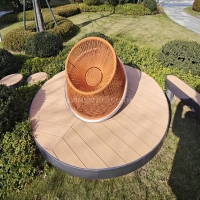Welcome to the website for landscape facilities products and knowledge.
What are the load distribution principles used in the engineering of landscape tables?
Landscape tables are essential elements in outdoor spaces, combining functionality with aesthetic appeal. Their engineering relies on precise load distribution principles to ensure durability and stability under varying conditions. Here are the core principles applied in their design:
1. Material Selection: The choice of materials—such as steel, aluminum, or treated wood—directly impacts load-bearing capacity. Engineers prioritize materials with high strength-to-weight ratios to evenly distribute weight.
2. Structural Geometry: The shape and layout of the table’s frame influence load distribution. Triangular or cross-bracing designs enhance stability by redirecting forces evenly across the structure.
3. Support Placement: Strategic placement of legs or supports ensures balanced weight distribution. Central supports or cantilevered designs may be used depending on the table’s size and intended use.
4. Dynamic Load Considerations: Landscape tables must withstand dynamic loads like wind, snow, or human activity. Engineers factor in these variables to prevent uneven stress concentrations.
5. Foundation and Anchoring: Proper anchoring to the ground or deck prevents shifting and maintains load equilibrium, especially in high-traffic areas.
By integrating these principles, landscape tables achieve longevity and safety, making them ideal for parks, gardens, and commercial outdoor spaces.
Related search:

Recommendation
Swivel chair-Specialty steel structure woven rattan leisure chair with rotatable design